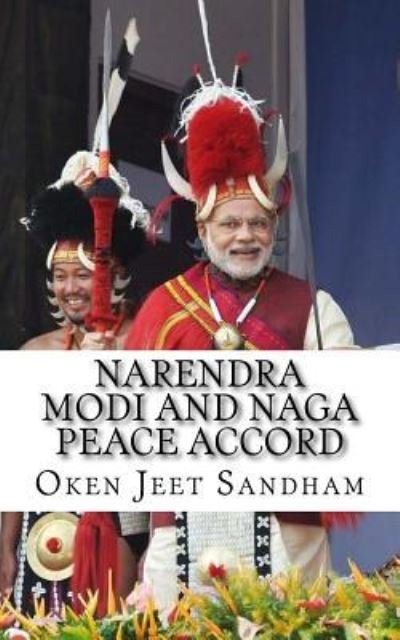
Tell your friends about this item:
Narendra Modi And Naga Peace Accord
Oken Jeet Sandham
Narendra Modi And Naga Peace Accord
Oken Jeet Sandham
The book - "Narendra Modi And Naga Peace Accord" - is one of the most current Indo-Naga political development stories. It had briefly given how the Naga political movement began since a few educated Naga people submitted a Memorandum to the Simon Commission in 1929, and then the bold declaration of the Naga Independence on 14 August 1947 by the Naga leaders under the banner of the Naga National Council (NNC). The NNC leaders had done this after Indian leaders' unresponsive attitudes to their wanting to live as a free Nation. Whether one likes it or not, the decision of NNC leaders at that point of time in declaring the "Naga Independence" on 14 August 1947 became politically "historic and landmark." Till today, various Naga groups are observing the "Naga Independence Day" with great pride and honor. And the Government of India or for that matter the State Government of Nagaland has not prevented them so far from observing the "Naga Independence Day" in various Naga places. There were various occasions where many Naga leaders both overground and underground tried to solve the Naga political issue. Overground Naga leaders initiated process and even contacted NNC supremo, AZ Phizo at London. Several correspondences between many Nagaland politicians including Dr SC Jamir and Phizo were there. The emergence of Naga People's Convention (NPC) had changed the course of Naga history as they were responsible for the birth of a full-fledged Statehood of Nagaland in 1963. In the following year in 1964, ceasefire was declared between the Government of India and Federal Government of Nagaland (FGN) through the initiative of NBCC. Subsequently, talks were held for finding settlement to the Indo-Naga issue. The talks collapsed after six rounds. Then the Shillong Accord came in 1975. This Accord had done maximum damage to NNC. The immediate fallout of this Accord could be seen by the formation of another Naga underground group - National Socialist Council of Nagaland (NSCN) in 1980. After about a decade, the NSCN got split into two in 1988 - one headed by Isak Chishi Swu and Th Muivah and the other by SS Khaplang and Dally Mungro. Following the split, hundreds of Naga underground cadres and high functionaries lost their precious lives due to factionalism. Sadly, it went on in large scale even after the Government of India's ceasefires with NSCN (IM) and NSCN (K). As far as the current status of the Naga political negotiation is concerned, solution to the extremely complicated Naga issue might come in anytime. The Government of India has already expressed "optimism" that solution to Naga issue will be arrived at soon. Soon after Narendra Modi became the Prime Minister of India, the political pundits in the Northeast began to think that some kind of political solution to the Naga political issue might come soon. Because Modi's style of dealing with the Naga issue is different than his predecessors. He allows Interlocutor, RN Ravi, to take decision on the Naga issue, although the contents of the "Framework Agreement" signed between the Government of India and NSCN (IM) on 3 August 2015 at Delhi is yet to be known. This book has been written mainly on the Prime Minister Modi's initiative to settle the Naga issue and hence named - "Narendra Modi and Naga Peace Accord." It is hoped that readers will find interest in it.
| Media | Books Paperback Book (Book with soft cover and glued back) |
| Released | January 14, 2016 |
| ISBN13 | 9781523355686 |
| Publishers | Createspace Independent Publishing Platf |
| Pages | 286 |
| Dimensions | 127 × 203 × 15 mm · 285 g |
| Language | English |
See all of Oken Jeet Sandham ( e.g. Paperback Book )

